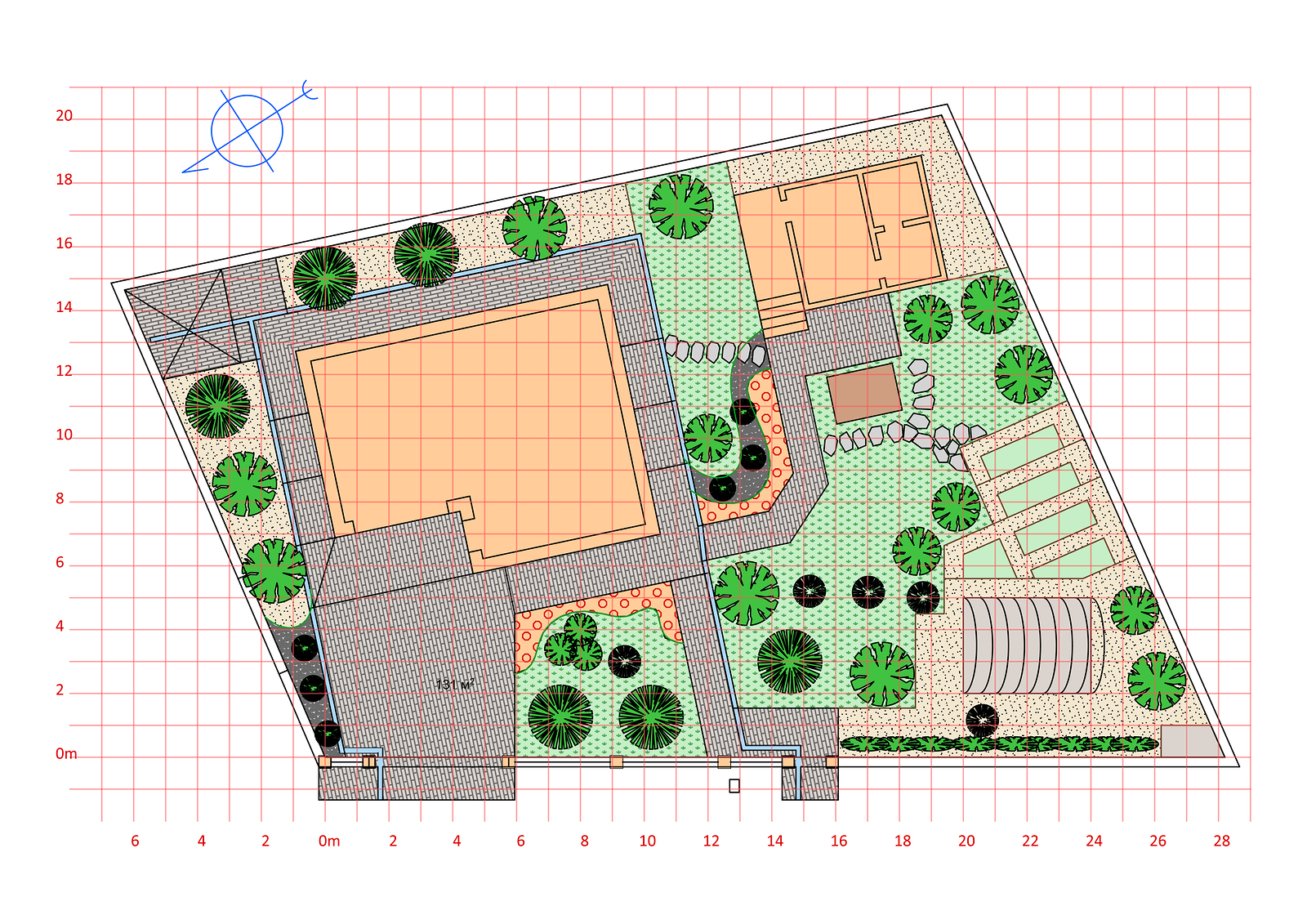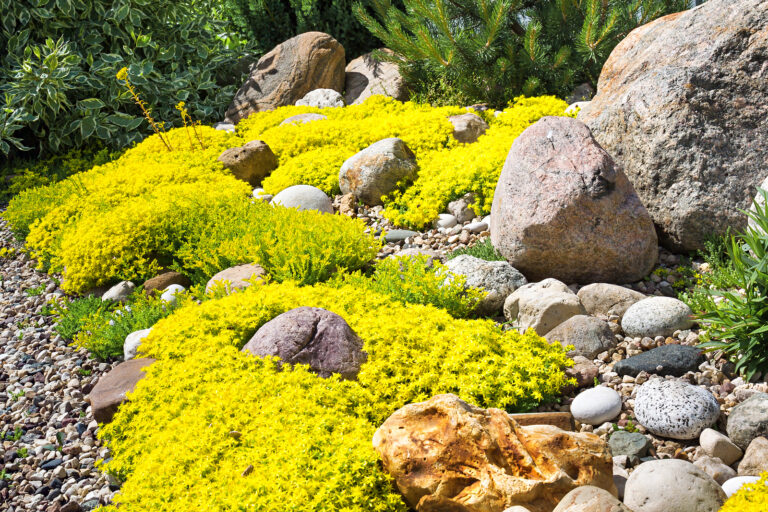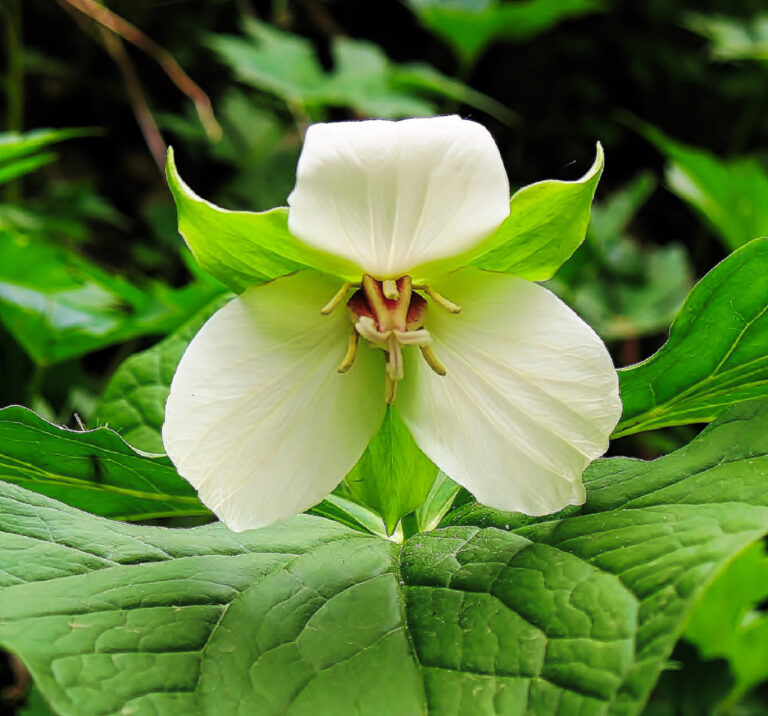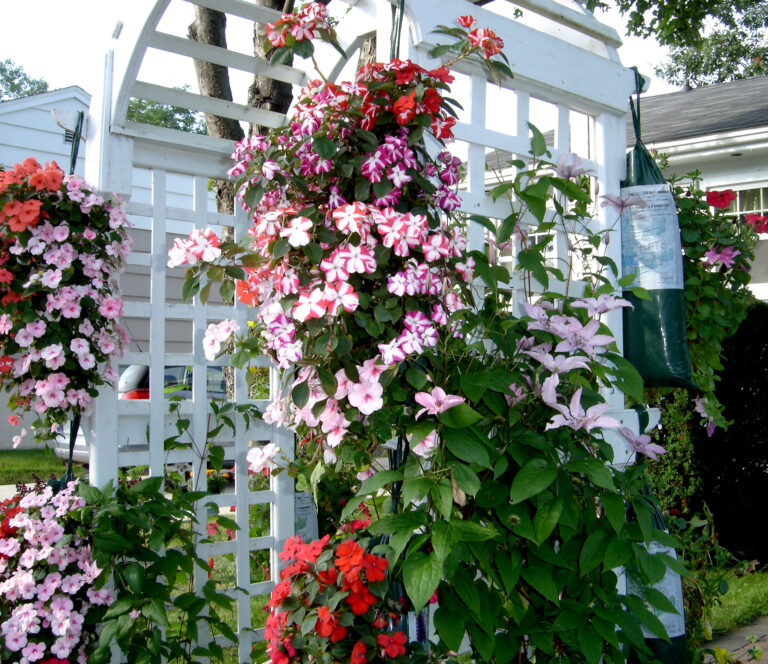Garden Planning Step-by-Step
Whether you have a new house with a bare, blank-slate yard or an out-of-control overgrown landscape, the process of planning a garden follows pretty much the same steps. Here they are:
Get to know the space
Don’t start planting your garden right away. Get to know the space. Start a map or diagram of the area to be planted then watch it through the day, a week, a month, and the year. Update and revise your map month-by-month, season-by-season. Many design experts recommend you live with your landscape for a year before you start a major garden design. Answer these questions:
- Where does the sun fall and when?
- Where is it shady and when?
- Where is it dry most of the time?
- Where is it moist most of the time?
- What is the soil like in my garden—average, sandy, clay, rocky?
If you are new to the neighborhood or new to town, do some weather research.
- What are the annual average high and low temperatures?
- Which months are warmer than 60°F (15°C)? Which months are cooler?
- When is the average last frost date in spring? This will be the start of the growing season.
- When is the average first frost date in fall? This will be the end of the growing season.
Visit a nearby public or botanical garden to get plant and design ideas. Take garden tours. Browse through garden design magazines and books to collect ideas. Take photos of your favorite gardens. Diagram or map gardens you like. Draw your dream garden.
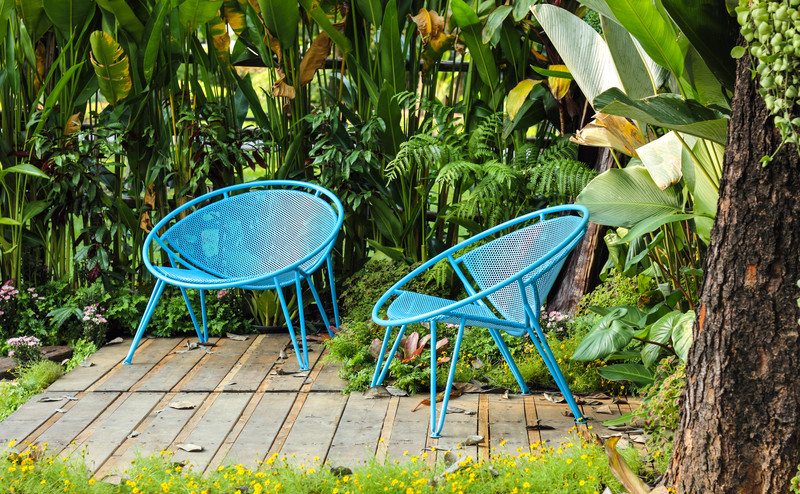
Basic questions to help you design your garden
- How much time will I spend in the garden? If you are going to be the gardener then plan on spending an average of a half-hour each week during the growing season to maintain every 100 square feet of planting beds.
- What are my growing conditions? Look at your answers to the question in the first section above. How much sun and shade will your garden get—where and when? What’s the soil like? How wet or dry is the climate? What are the average temperature highs and lows?
- What’s my budget? Make a list of the tools and supplies you will need. Make a list of the shrubs and trees you will need to purchase to create the “bones” or basic design of the garden. Make a list of the perennials and annuals you want to plant. Estimate how much hardscape—walkways, patio, deck—you want. You can take these lists to a nearby garden center or home improvement store to get cost estimates.
- What’s my home’s architectural style? Your garden design should work in tandem with your house.
- What do I want my garden to look like? Formal, informal, cottage garden, manicured, native, eclectic.
- What is the predominant style of my town, my region? Look at other gardens in the area. Are plantings lush and tropical? Evergreen shrubs and trees? Deciduous shrubs and trees? Drought-tolerant native plants? Prairie natives? Mountain natives? Seashore plantings? Wildflowers?
- What’s my lifestyle? Am I a garden person? How do I want to use my garden? Entertaining? Relaxation? Meditation? Will children use the garden? Will pets use the garden? Do I like to spend weekends with my hands in the dirt or my feet up on the lounge?
- What are my favorite plants? Do you already have specific plants or plant combinations in mind? Make a list.
- What are my favorite colors? Do I like warm colors or cool colors? How will the colors in my garden make me feel? How will the colorful flowers I choose look with the house and existing structures—fences, garage, shed, pool?
- Do I want to attract birds or wildlife to the garden? Do I want to attract songbirds and hummingbirds? Butterflies and bees? Will I welcome deer and rabbits or do I want to repel them?
- Do I want flowers for cutting? A cutting flower garden will need flowers for each time of the year, of the growing season—spring, summer, and fall. Cutting flowers are planted in succession.
- Do I want winter interest? Do I want trees and shrubs with unusual forms apparent in winter? Do I want plants with colorful bark or winter leaves or blooms?
- Do I want a fragrance or a touch garden? Is scent or feel important to the children or adults visiting the garden? Which fragrant or textured plants do I want?
- Is the garden for one season, two, three, or four? Do I want year-round blooms or colors? Will I be away for part of the year? Do I want just spring and summer blooms? Do I want winter interest?
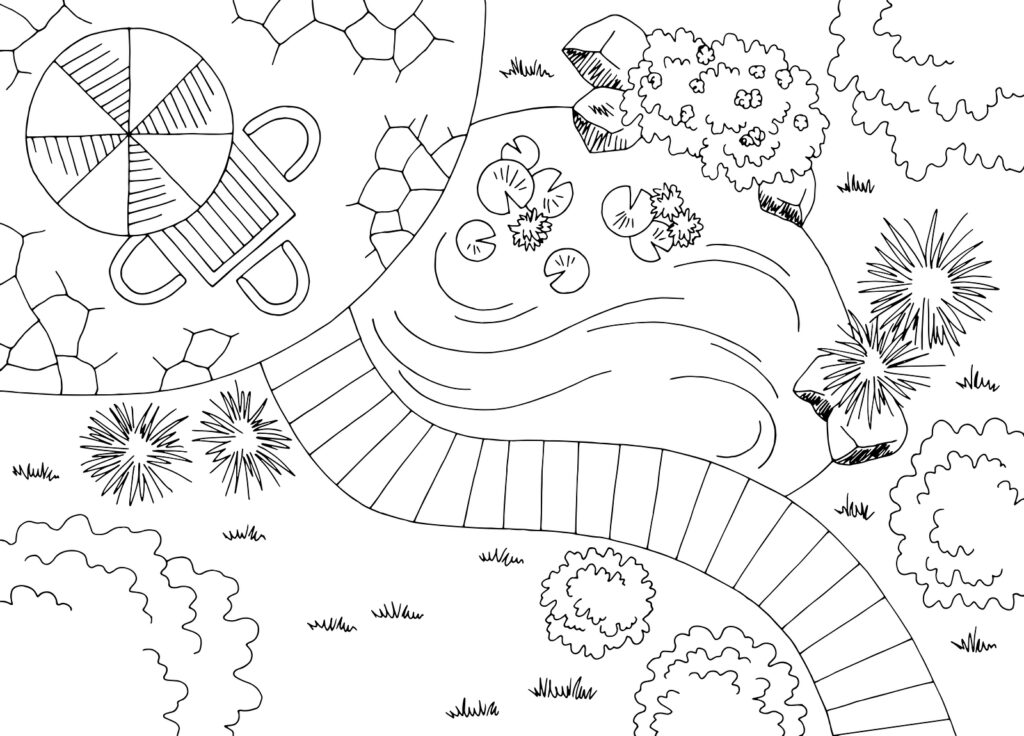
Making a garden plan
Once you’ve gotten to know your garden space and have decided what you want in a garden, it will be time to put pencil to paper. Here’s what to do next:
- Make a scale diagram of the garden. Go into the space and measure the distances between fixed elements in the landscape. What’s the distance between the house and the street? Distance between the house and perimeter fences or property lines? Where does the front yard start and stop, the backyard, the side yards? Make accurate measurements and jot them down.
- Use grid paper to plot the garden. Start by placing fixed unchanging elements of the landscape on your grid paper plan—place the house, garage, and driveway. Once the fixed elements are on the grid paper add other elements that change infrequently– mature trees, patio, walkways, and fences—more permanent elements that will remain or be added.
- Add tracing paper overlays. You can now set an overlay of tracing paper on top of the basic plan and begin adding new elements—new trees, shrubs, hedges, and planting beds. Be sure you are adding these to scale; add them at mature size. Use several overlays of tracing paper to experiment with the design.
- Reflect mature plant size. Your plan should reflect the mature height and width of plantings. You can add colored overlays to map seasonal color—a progression of blooms, spring, summer, and fall. Your final planting plan should take into consideration each season and the sun and shade each season.
- Think in terms of planting groups. Group plants that have the same light and water needs together. Group plants that have the same soil needs together if your site has varied soils.

Getting help with the design
If you are having a difficult time imagining what your garden could look like or how to design it, get help from designers and plant experts. Here’s who you could consult:
- Garden center associates. Take your basic plan to a garden center and ask for an experienced plant person or designer to give you some suggestions. Ask for plant lists.
- Garden designers. A garden designer may not have a design license, but they often have lots of experience. A garden designer can design or help you design your garden for a fee.
- Landscape architects are professionally trained and licensed designers. They can prepare planting plans and grading and construction drawings. They often work with experienced contractors. A landscape architect’s fee can be substantial; request an estimate before you get started.
- Landscape contractors and design-build contractors are licensed contractors, not architects. They are commonly well-qualified to design and build home landscapes. They are less expensive than landscape architects but more expenses than garden designers.
Good Products for Raised Bed Growing at Amazon:
- Galvanized Raised Bed 8×3
- Cedar Raised Bed 4×8
- Elevated Cedar Planter 4×2
- Walk-In Greenhouse Tunnel 15x7x7
- Row Cover for Freeze Protection 10×30

